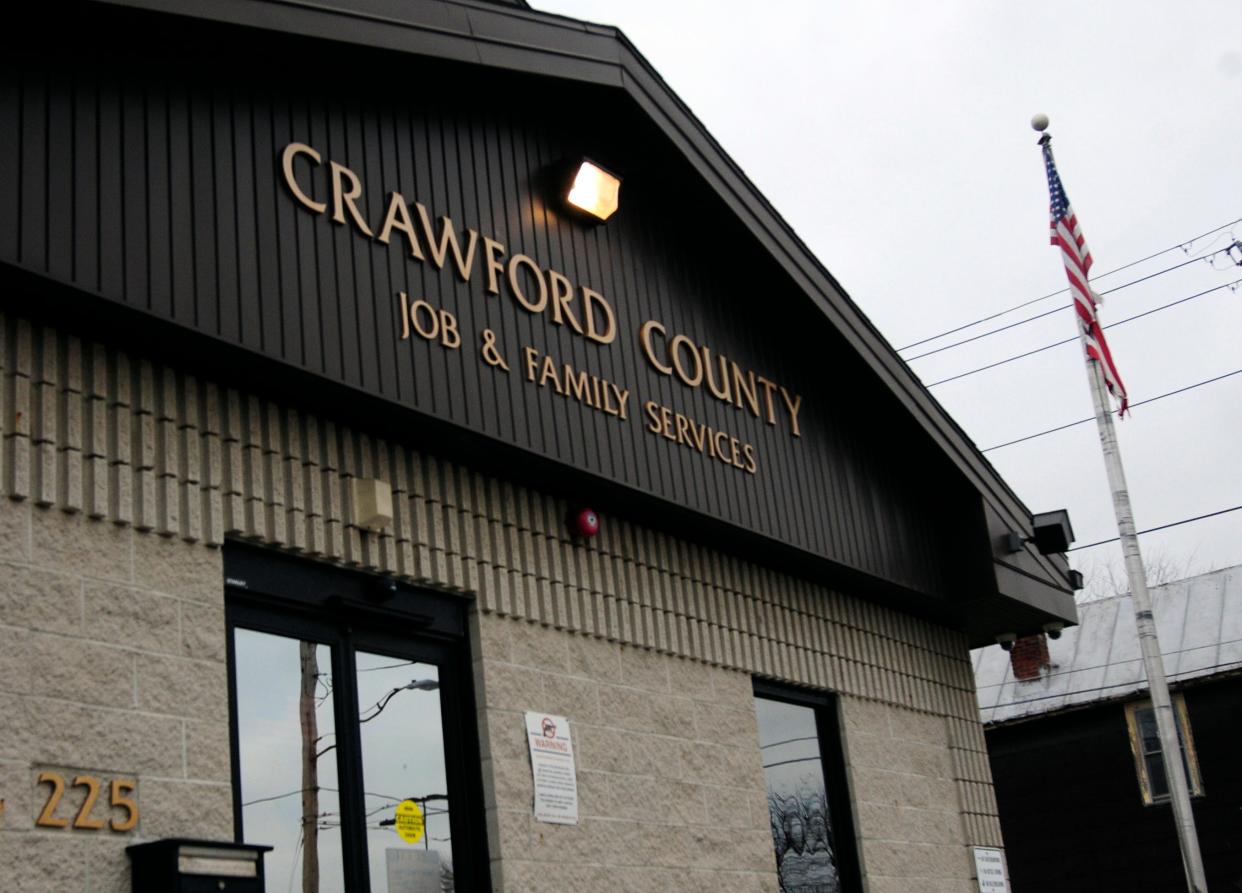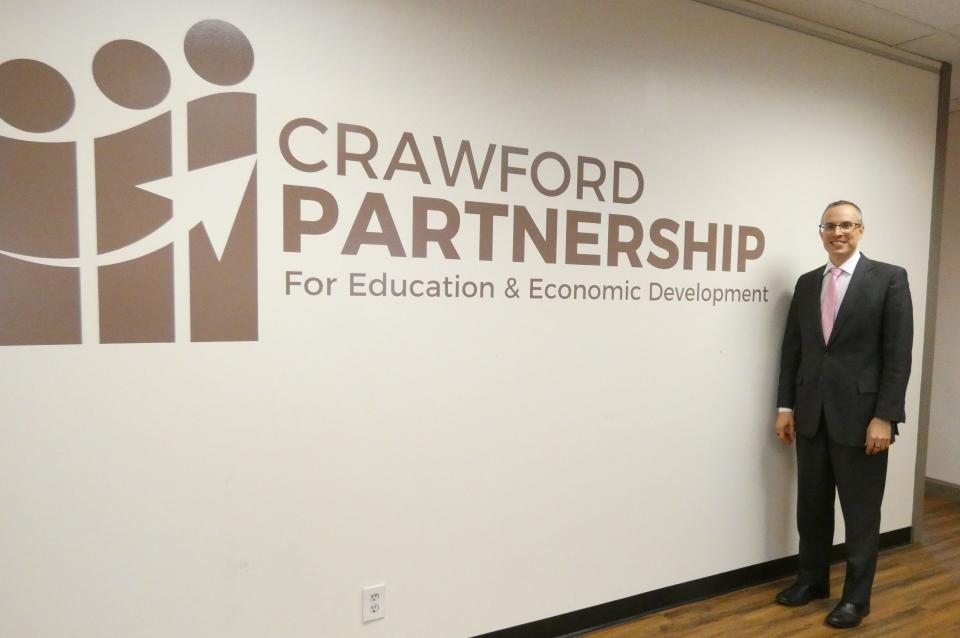Finding and keeping workers remains a challenge for local employers

Two years after the COVID-19 pandemic wreaked havoc on the local job market, employers are still struggling to fill jobs.
"Without fail, this is the No. 1 issue with every single company I talk to," said David Zak, executive director of the Crawford Partnership for Education and Economic Development. They can't meet workforce needs.
Turnover rates are high; "oftentimes companies can find the labor; they can't retain the labor," he said.
But at the same time, the county's unemployment rate for July was at 5.7%, well above the state rate of 3.9%, according to statistics from the Ohio Department of Job and Family Services.
That's comparable to the rate the county had going into the pandemic, pointed out Angela Neef, supervisor of OhioMeansJobs-Crawford County Job and Family Services. In February 2020, the county's rate was 5.3%.
"Coming out of COVID, businesses were saying it was more difficult than it was pre-COVID," Zak said; unemployment was at 50-year lows. "I would say now, being in mid-2022, it has not abated."
"Employers are still looking for people," Neef said. "There's a lot of job openings across all sectors. We're still seeing that where employers are really needing people, whether it's manufacturing, health care, retail. There's still a big demand for employees."
One of her office's goals has been to encourage people to get back into the workforce after the pandemic, and to lift some of the barriers that might be keeping them away, she said.
County's workforce continues to shrink
The county's workforce has been shrinking, Neef said. The county's current workforce, according to the state, is 17,600, she said.
According to Local Area Unemployment Statistics (LAUS) figures from the Ohio Department of Job and Family Services website, in 2000 the county had a workforce of 23,500. In 2005, it was 22,800; in 2010, 21,000; in 2015, 19,100; and in 2020, 18,500.
"It's been steadily dropping over the years because of the demographics," Neef said. "It's not a rapid decline; it's just a little bit as years have gone by because of demographics. The aging workforce, retirements, things like that. ... There are strategies we have to do to engage people who are maybe not in the workforce right now and also attract new people to our area."

Zak said while he's no expert in the field, he doesn't believe all of the workers have returned to the job market following "the Great Resignation."
Labor market is 'hyper-competitive'
"The idea that we need to create jobs, create jobs, create jobs is great, but at the end of the day, these companies are not having success finding ... all the workforce talent that they want at the price they want to pay," he said. "I would describe the labor market as hyper-competitive, in that the people who are working can have their pick."
Employers are being forced to look at not just the pay they are offering, but other factors that might make one job more attractive than another, he said. Some are "doing creative things with shifts." Others are changing how many days of the week people work, or how many hours in a week.
"I heard once that someone said OK, well, back in the day it was about survival," Zak said. "Then it was about standard of living. And now it's about quality of life. People are like, I don't want to work 40 hours."
While to him, working 40 hours a week is a minimum expectation, that's not necessarily the case for millennials and younger workers, Zak said.
"It's very difficult for companies to find people who want to go into that," he said. "I also know, anecdotally, that some companies are forcing overtime because they have to meet their quotas."
That impacts quality of life, and some workers may leave — resulting in more long hours for those who remain, he explained. "It's almost like a vicious cycle, where companies are trying to stay afloat."
Many county residents work in other counties
When it's time to go to work each day, more than 6,300 Crawford County residents head for another county, according to a recently completed U.S. 30 Corridor Comprehensive Economic Development Strategy. That's more than Richland County, which has about 2,300 outward commuters; or Ashland, which has more than 3,500.
"We do have some coming in, but the proportion of those coming in to those leaving is like for every one coming in, two are leaving the county to work elsewhere," Zak said. "Is it that we don't have the people here, or are people going for better career opportunities?"
Some are leaving for "specialty gigs" or executive positions, but lower wages in the county may be a factor, Zak said. A study comparing Crawford County's average wages to those of surrounding counties is expected soon. Recently, Crawford was competing with an eastern Ohio county to attract a new employer; Crawford's average wage was lower, he said.
But comparing average wages between counties is tricky, he explained. One major employer that pays very well can drive up the average wage in the county. Locally owned manufacturers that employ about 50 workers might be paying the same as employers of the same size in the next county.
"Plus it's not just about pay and not just about benefits; it also gets into culture, and the things that people are looking for," Zak said. And "good-paying job" is a subjective term.
"I think we do have some really great employers and good jobs here in Crawford County," Neef said. "We've got Timken, who's been steadily hiring for some time now. There are excellent jobs in the health care industry. So if people need help trying to identify jobs that fit what they're looking for as far as wages or skills or schedules, that's something that we can help them try to figure out."
Zak said part of his office's job is helping companies figure out whether their pay is competitive, or what they need to do to make their jobs more attractive to workers.
"So one answer in creating good jobs here is not just bringing new companies here," he said. "It's giving companies here the intelligence they need and tools they need in order to create jobs that are more attractive, in terms of pay, benefits and other things."
How will closing of the Bucyrus lamp plant affect the job market?
GE Lighting, a Savant Company, has notified the city it intends to close its Bucyrus plant at the end of September. When the closure plan was announced earlier this year, a company spokesman said 174 people were working at the Bucyrus plant.
"It no doubt will be a big impact for those families," Neef said. "The good news is that there's a lot of employers waiting to hire those folks because they're skilled employees with a good work ethic, so they're in high demand right now. I know a lot of employers have reached out to express their interest in those workers."

Not all of the GE employees have indicated they'll be looking for a new job when the lamp plant closes, she said.
"I think we're seeing a little bit of everything," Neef said. Some people are trying to figure out what their next move is, so for some of them maybe that's starting their own business. Some are looking at retirement. Others are just looking to find something similar to what they were doing and others are just maybe thinking about total career changes. So I think we've see a variety of different kind of plans."
Making sure workers' skills match employers' needs is an ongoing effort.
"A lot of employers are willing to train people, but there are of course jobs where you have to have a certain skill set," Neef said. "That's where the career tech schools come in — North Central State College, the Success Center — who can help people get the skills and the training they need for some of these higher-skill wages. And then if they need help paying for it, we have a lot of different training programs that we can leverage to help them do that.
"To be a healthy, thriving community, we need employers and we need workers to fill those jobs for those employers. If you're looking for something and you need help, you can come up to the Job Center. We can help steer you in the right direction, help you figure out what you want to do, how to get those skills."
Young people need to understand their options
It's also critical to make sure young people completing their educations understand what kind of jobs are available locally, Zak said.
"Most kids are only personally familiar with retail," he said. "I work at fast food because I go to fast food. I work in a retail clothing establishment because I shop there. Most of them don't get into a manufacturing plant ... or they don't get into a health care facility unless they break their ankle or something. So how do we make them even aware?"
Zak, who joined the Crawford Partnership in May, said so far, he believes local schools are doing a good job of trying to be proactive in meeting that need.
"Always more that can be done," he said. "There's always new, innovative solutions and approaches."
Attracting new businesses
Zak's office is always working to attract new employers, too.
"We're doing a lot of content and relationship-based marketing, working on product development. We're responding to any and all requests for businesses," Zak said. "But economic development is not Moby Dick and the white whale. We can't go get an Intel; we don't have that kind of land. We don't have the labor force that's going to be needed. It's an organic growth thing, where you generally try to bring in businesses that fit your community and grow the businesses that you have. ...
"It's pursuing a holistic, comprehensive, strategic economic development approach that includes building long-term workforce development strategies and programs to support adult, youth-based and nontraditional workforce development. It's doing the meat-and-potatoes industrial development, doing community development and it's trying to create a robust ecosystem so businesses can start up as well."
ggoble@gannett.com
419-559-7263
This article originally appeared on Bucyrus Telegraph-Forum: For local employers, keeping workers remains a struggle

